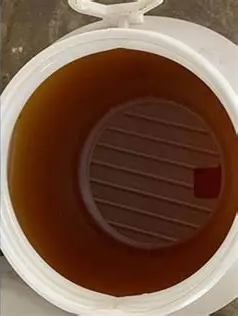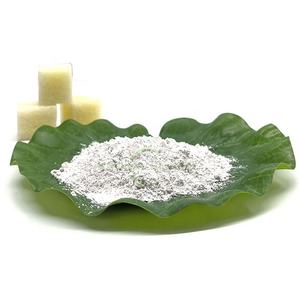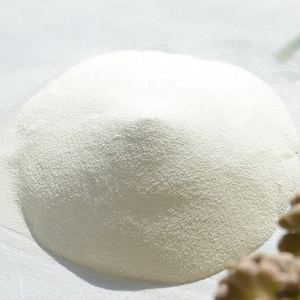1. Introduction
Just 24 hours ago, agricultural chemical giant Syngenta announced a new line of precision herbicides that leverage sodium lauryl sulfate (SLS) as a core wetting agent to boost crop safety and weed control in drought-stressed fields. This move signals a renewed interest in classic anionic surfactants like SLS—not for shampoos or toothpaste, but for their unmatched ability to reduce surface tension on waxy or hairy plant leaves.

While most consumers associate sodium lauryl sulfate with personal care products, its role as a surfactant for herbicides is both scientifically sound and commercially strategic. In this article, we’ll dive into how SLS is being repurposed in advanced agrochemical applications, why it outperforms many ‘green’ alternatives in real-world conditions, and how formulators are blending it with other surfactants like cocamidopropyl betaine and polysorbate 80 to create next-gen weed-killing solutions.
2. Why Sodium Lauryl Sulfate Works So Well in Herbicides
Sodium lauryl sulfate—also known as sodium dodecyl sulfate (SDS)—is a powerful anionic surfactant. Its molecular structure features a hydrophobic tail (dodecyl chain) and a hydrophilic sulfate head, allowing it to disrupt water’s surface tension dramatically. This property is critical when applying herbicides to plants with natural defenses like cuticular waxes.
In agricultural settings, a surfactant for weed killer must act as a lawn wetting agent that ensures the spray solution spreads evenly and sticks to the target. SLS does this efficiently, even at low concentrations (typically 0.1–0.5% v/v). Compared to non-ionic surfactants like ethoxylated alcohol or Span80, SLS provides faster wetting on hydrophobic surfaces.
- SLS reduces droplet contact angle on leaf surfaces
- Enhances penetration of active ingredients like glyphosate
- Works effectively in hard water conditions where some bio surfactants fail
- Cost-effective compared to specialty fluoro surfactants or Pluronic 127

3. How SLS Stacks Up Against Other Surfactants
Not all surfactants are created equal. While methylated seed oil (MSO) and alkyl polyglucoside are popular ‘eco-friendly’ options, they often lack the rapid wetting power of SLS. For example, coco glucoside—a nonionic surfactant derived from coconut—works well as a mild emulsifier but doesn’t lower surface tension as aggressively as anionic surfactants like sodium lauryl sulfate.
Similarly, amphoteric surfactants such as cocamidopropyl betaine (also called coco betaine or amidopropyl betaine) are valued for foam stability and skin compatibility in shampoos, but in herbicide blends, they’re typically used as secondary surfactants to reduce phytotoxicity—not as primary wetting agents.
Cationic surfactants like cetyl trimethyl ammonium bromide (CTAB) or cetyltrimethylammonium bromide are generally avoided in herbicides because they can bind to negatively charged plant surfaces and interfere with active ingredient uptake. That’s why most effective herbicide surfactant systems rely on anionic or non-ionic types—or smart blends of both.
4. Modern Formulations: Blending SLS with Complementary Surfactants

Today’s advanced herbicide adjuvants rarely use SLS alone. Instead, formulators combine it with co-surfactants to balance performance, safety, and environmental impact. A typical high-efficacy blend might include:
- Sodium lauryl sulfate (primary anionic wetter)
- Polysorbate 80 or laureth sulphate (non-ionic spreader)
- Cocamidopropyl betaine (amphoteric buffer to reduce leaf burn)
- Decyl glucoside or sodium cocoyl glutamate (mild bio-based enhancers)
This multi-surfactant approach leverages the strengths of each class: anionic for wetting, non-ionic for spreading, and amphoteric for compatibility. Notably, sodium laureth sulfate (SLES)—often confused with SLS—is less common in agrochemicals due to its higher cost and ethoxylation byproducts.
Interestingly, some companies are revisiting older chemistries like sodium dodecylbenzene sulfonate or sodium oleate, but SLS remains a benchmark for cost-to-performance ratio. Even lignin sulfonate, a byproduct of paper manufacturing used as a dispersant, can’t match SLS’s instantaneous wetting action.
5. Sourcing and Practical Use
For farmers and custom applicators, finding reliable sodium lauryl sulfate for sale is easier than ever. Suppliers like Rohit Surfactants Private Limited offer technical-grade SLS specifically labeled for agricultural use—not just cosmetic or lab grades. Always verify purity; lab-grade sodium dodecyl sulfate may contain impurities unsuitable for field application.
When mixing, a common starting point is 1–2 teaspoons of SLS per gallon of spray solution. However, always follow herbicide label instructions—some products already include surfactants, and overuse can cause crop damage. Also, avoid combining SLS with cationic herbicides, as anionic cationic interactions can cause precipitation.
6. Conclusion
Sodium lauryl sulfate is far more than a shampoo ingredient. In the world of precision agriculture, it’s a proven, high-performance surfactant for herbicides that delivers rapid wetting, improved uptake, and consistent results—even under challenging field conditions. While newer bio surfactants and ethoxylated alcohols have their place, SLS remains a workhorse in advanced weed control formulations. As companies like Syngenta double down on surfactant-optimized chemistries, expect to see SLS—and its close relatives like sodium lauroyl sarcosinate and sodium coco sulfate—playing an even bigger role in sustainable farming.
Our Website founded on October 17, 2012, is a high-tech enterprise committed to the research and development, production, processing, sales and technical services of ceramic relative materials such as Unlock. Our products includes but not limited to Boron Carbide Ceramic Products, Boron Nitride Ceramic Products, Silicon Carbide Ceramic Products, Silicon Nitride Ceramic Products, Zirconium Dioxide Ceramic Products, etc. If you are interested, please feel free to contact us.


